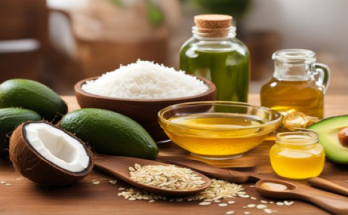Embracing the skinimalism trend
For years, the beauty industry has been driving the narrative that daily skincare regimes require more and more products to achieve healthy, youthful skin. However, the experience of lockdown revealed a startling truth: without the need to go out, people were using fewer products, and skin health improved through this ‘skinimalism’ practice. The reason is that excessive product use can exacerbate skin conditions. This is a concept that probiotic skincare brand, Esse, has been promoting for some time now – when it comes to skin health, less is more.
“A heavy product load can disrupt barrier function, causing breakouts, dryness, and skin sensitivity,” explained Trevor Steyn, founder of Esse. “Skinimalism means cutting down on the number of skincare and makeup products used, giving your skin a chance to establish a healthy barrier, as nature intended.”
Here are 5 ways consumers can apply skinimalism to routines:
1. Stop deep cleansing
Another message instilled by the beauty industry is that the skin should be deeply cleansed, and its natural oils removed, in order to maintain a healthy glow. This is completely false. In fact, the oil produced by skin – known as sebum – is a critical part of the barrier that assists in protecting and hydrating the skin. All that happens when we remove it is that sebaceous glands must increase production but can only keep up by producing sebum of a poorer quality. This can lead to skin conditions such as acne, eczema, rosacea, and dermatitis.
2. Simplify the morning cleanse
During sleep, the sebaceous glands are hard at work, producing the necessary sebum to protect the skin during the day ahead. By performing a deep cleanse every morning, we remove this protective layer. The best option is simply rinsing the face with cool water. Sebum melts at 32°C – so the cooler the better!
3. Use a mild evening cleanser
The evening is a different story, as the makeup, foundation or sunscreen from the day will need to be cleaned off the skin. Foaming cleansers tend to be quite harsh, as they emulsify sebum and wash it away. This is why it’s better to use something milder, even cream-based, so the product is removed without disrupting the microbiome.
4. Keep the post-cleanse routine simple
Once the skin has been cleaned, there’s no need to pile on other products; often a good moisturiser is sufficient. However, some skin types might require something extra, and so a touch of serum or oil would be beneficial.
5. Use the right products
Products that disrupt the microbial balance on the skin often result in a dependence, so you need more product, more often. If you use products that are well-designed and prioritise the skin microbiome, you can use less to achieve more. Esse seeds the skin with probiotics and feeds the microbiome with prebiotic nutrients, to promote a balanced ecology on the skin.
We need to move away from this long-held misbelief that being ‘clean’ means ridding ourselves of nature. This disrupts and pollutes the skin’s complex ecosystem, and we’re losing our best skin. What we should be doing, through skinimalism, is minimising this disruption. This gives skin a chance to find a healthy balance, as nature intended.




